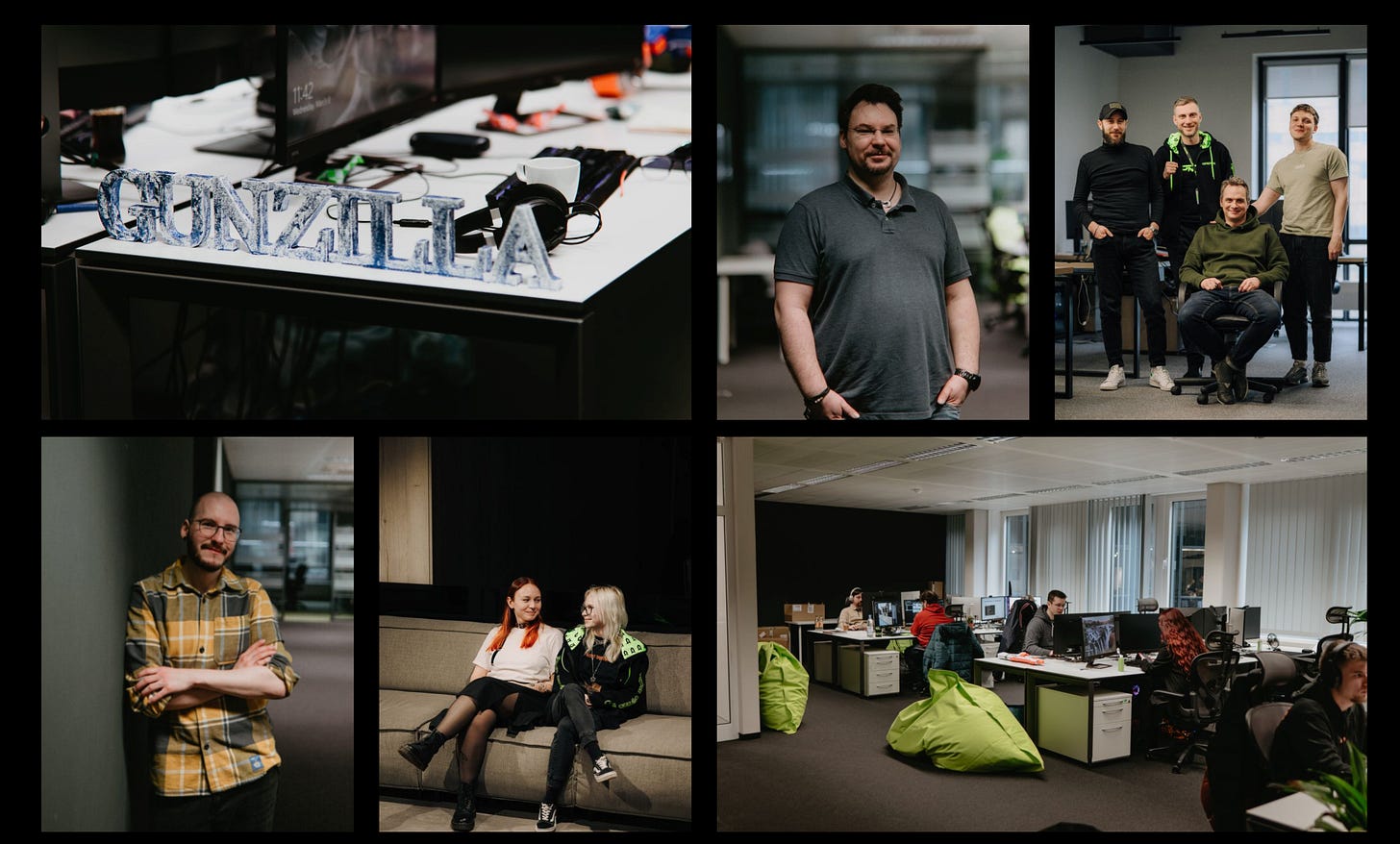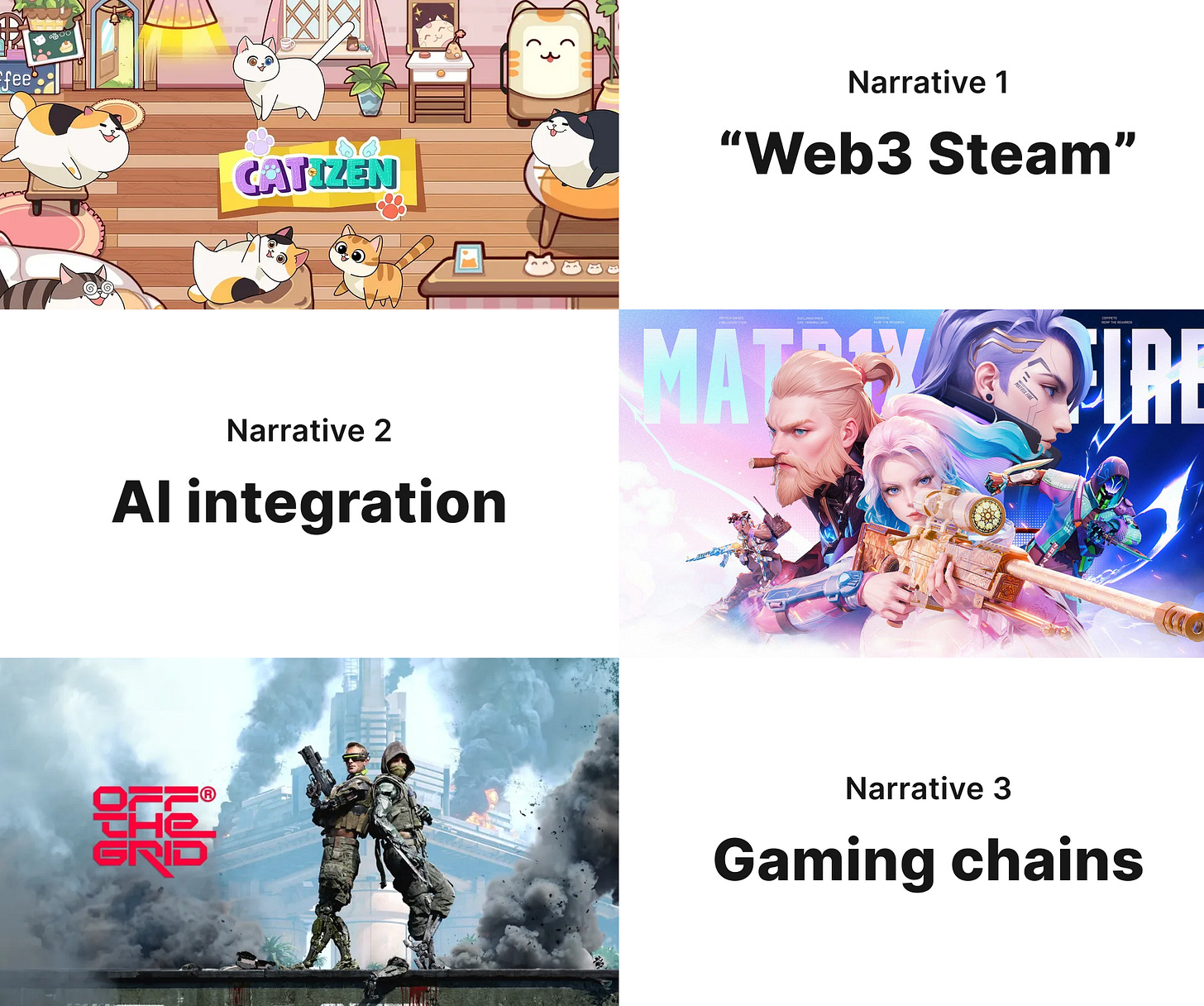Gaming Deep | Gunzilla Games Listing on Binance: A New Dawn For Web3 Games?
On March 31, the long-awaited moment arrived: the $GUN token officially launched on Binance, marking a major milestone not just for Gunzilla Games but for the entire Web3 gaming space.
As the first Web3 gaming token to debut on Binance since Pixels in early 2024, $GUN’s listing signals a strong resurgence of confidence in blockchain-powered games. Gunzilla Games, renowned for its AAA cyberpunk battle royale Off The Grid—the first Web3 title to launch on consoles — has gained serious traction. Some see this moment as a turning point—a sign that Web3 gaming may be entering its comeback arc.
Who is Gunzilla Games?
Gunzilla Games, founded in 2020, is an independent AAA game developer and publisher with studios in Frankfurt, Kyiv, and London. The studio has earned a reputation for pushing the boundaries of gaming with its flagship title, Off The Grid. This next-generation cyberpunk battle royale made waves upon its early access release for PC, PlayStation 5, and Xbox Series X in October 2024, captivating players with its immersive, cross-platform experience.
Not stopping at innovative gameplay, Gunzilla is also pioneering the integration of blockchain technology into gaming through its proprietary GUNZ Network. This platform empowers players to trade digital assets and customize their in-game experience, all while maintaining a free-to-play model that puts the focus on enjoyment.
What truly sets Gunzilla apart is its star-studded team, drawing talent from industry giants like Ubisoft, EA, and THQ. The company’s creative vision is further enhanced by the addition of Oscar-nominated filmmaker Neill Blomkamp as Chief Visionary Officer and acclaimed author Richard K. Morgan, best known for the Altered Carbon series. With key figures such as CTO Timur Davidenko, whose work includes titles like Far Cry and Crysis, and Art Director Jussi Keteli, formerly of Gears of War, Gunzilla Games is not only redefining gameplay but also reshaping the gaming narrative.
Oh, in case you don't know, such an all-star game studio recently made a very bold move to preserve gaming heritage. Gunzilla recently acquired and relaunched Game Informer, ensuring that over 30 years of gaming history remains accessible to fans worldwide.
Why no Web3 gaming hype this cycle?
Wait, did you just say Gunzilla is the first Web3 gaming token to list on Binance since Pixels in early 2024? This begs a deeper question: Why no Web3 gaming hype this cycle?
Is it because the games are bad?
Clearly not. Look back at the 2020 bull run—most "Web3 games" back then were just DeFi with a thin gaming veneer, often little more than glorified websites. Even if you question whether TON’s tap-to-earn games qualify as real games, they’re still leagues ahead of the zero-gameplay "experiences" flooding the market in 2020.
The straightforward answer? No wealth effect.
Last cycle, NFT and GameFi projects thrived by creating concentrated wealth for early adopters, fueling hype around "X-to-Earn" gimmicks. This time, meme coins—simpler, more accessible, and far easier to launch (no need for NFTs or complex tokenomics, just a Twitter account and a website)—have stolen the spotlight.
Another factor: In 2021, projects could ride hype alone to listings and attention. Now, users demand actual gameplay. The bar is higher, and fewer teams can clear it.
This tougher environment forces studios to work harder. Today’s Web3 games must deliver both quality and compelling narratives to attract users. Three dominant narratives have emerged:
"Web3 Steam" platforms
Distribution platforms with built-in wallets and incentives. (e.g., TON’s Catizen)
AI integration
Games that leverage AI agents or dynamic storytelling. (e.g., Matr1x)
Gaming chains
Custom L1/L2s like Gunzilla’s for game-optimized infrastructure. (e.g., Gunzilla’s upcoming title)
The shift in speculative focus, coupled with the higher execution bar, explains why Web3 gaming has no hype this cycle.
Will Web3 Gaming Bounce Back? Key Challenges?
Gaming remains the most engaging form of digital entertainment, and the Web3 model—built on player-driven economies and sustained content creation—will inevitably lead to groundbreaking titles. Here’s why:
Exchanges continue to prioritize Web3 game tokens for one simple reason: cheaper, stickier user growth. Unlike traditional ads, listing these tokens lets exchanges tap into gaming communities organically, while studios gain early revenue streams (via token sales) and reduce development risks. This symbiotic relationship is already pushing traditional game studios to explore crypto integrations.
When markets rebound, Web3 games hold a unique edge: skill-driven rewards. Unlike meme coins’ speculative chaos, well-designed games can offer players clear goals and sustainable earning mechanics, creating a more targeted—and motivating—wealth effect.
But critical hurdles remain:
Mobile’s walled gardens: Apple and Google’s draconian app store policies—arbitrary bans, 30% revenue cuts, and censorship—cripple Web3 mobile games and disrupt in-game economies.
PC’s growth trap: Desktop games face steeper costs, slower viral traction, and weaker social sharing compared to mobile-first hits.
Crypto as a choice, not a chore: Blockchain should enhance gameplay (e.g., tradable assets), not force players into wallet setups or gas fee headaches.
Despite these hurdles, giants like Sony and Epic Games are quietly investing in Web3 infrastructure and incubators. While mainstream hype may still be a ways off, the sector’s trajectory is clear:
Web3 gaming’s breakthrough isn’t a matter of luck, but time.
About Gaming Deep
The fusion of web3 and gaming is inevitable. Web3 gaming is poised to revolutionize game development, distribution, culture, and economic structures. Believing this shift, CARV introduces Gaming Deep, a series dedicated to exploring the latest advancements in Web3 gaming. Our mission is to uncover the social significance and financial potential of these developments, providing readers with early insights into industry trends and major milestones. Staying informed about these changes is crucial for gamers, developers, and enthusiasts alike. By understanding the evolving landscape, you can better navigate and capitalize on emerging opportunities within the gaming ecosystem.






